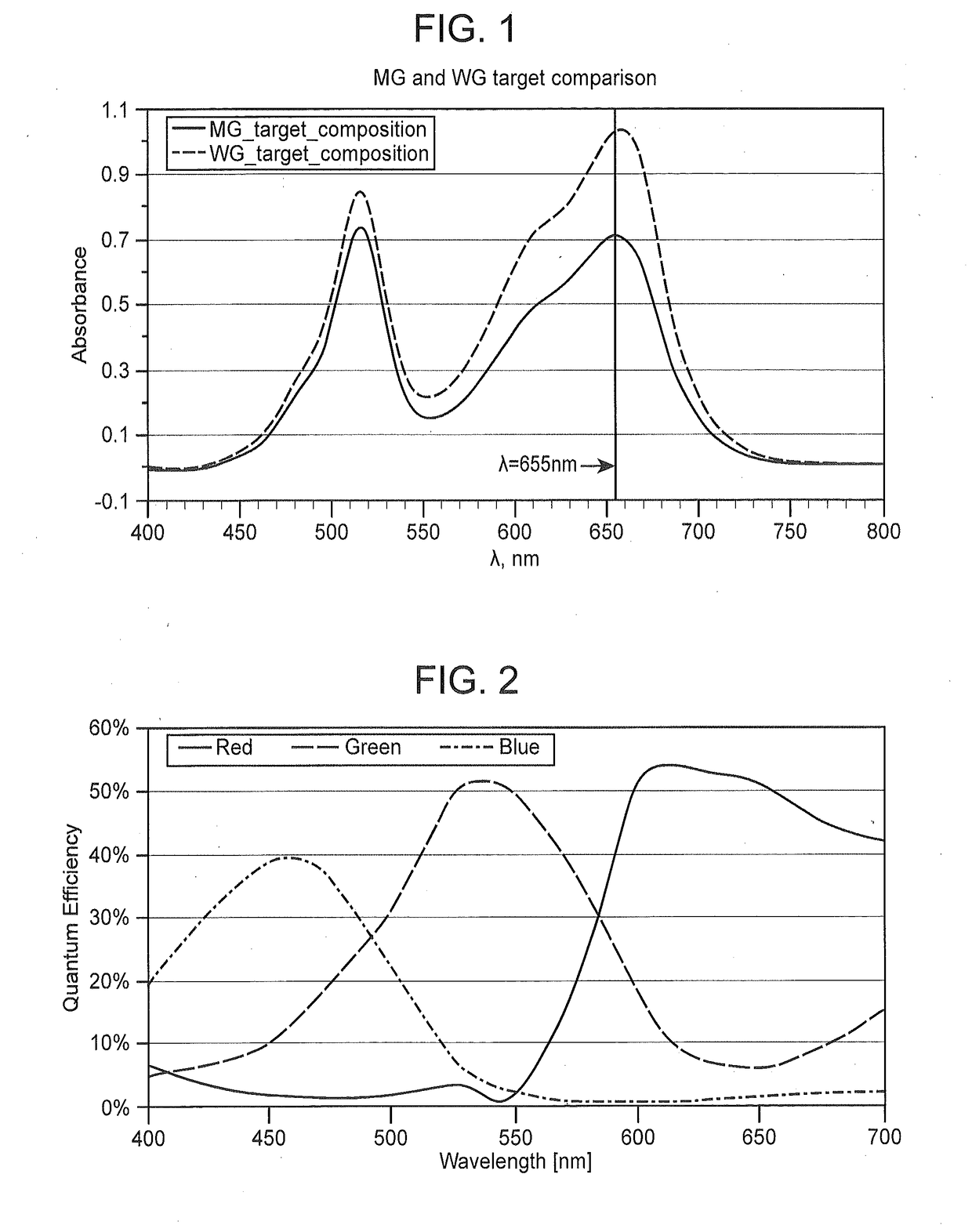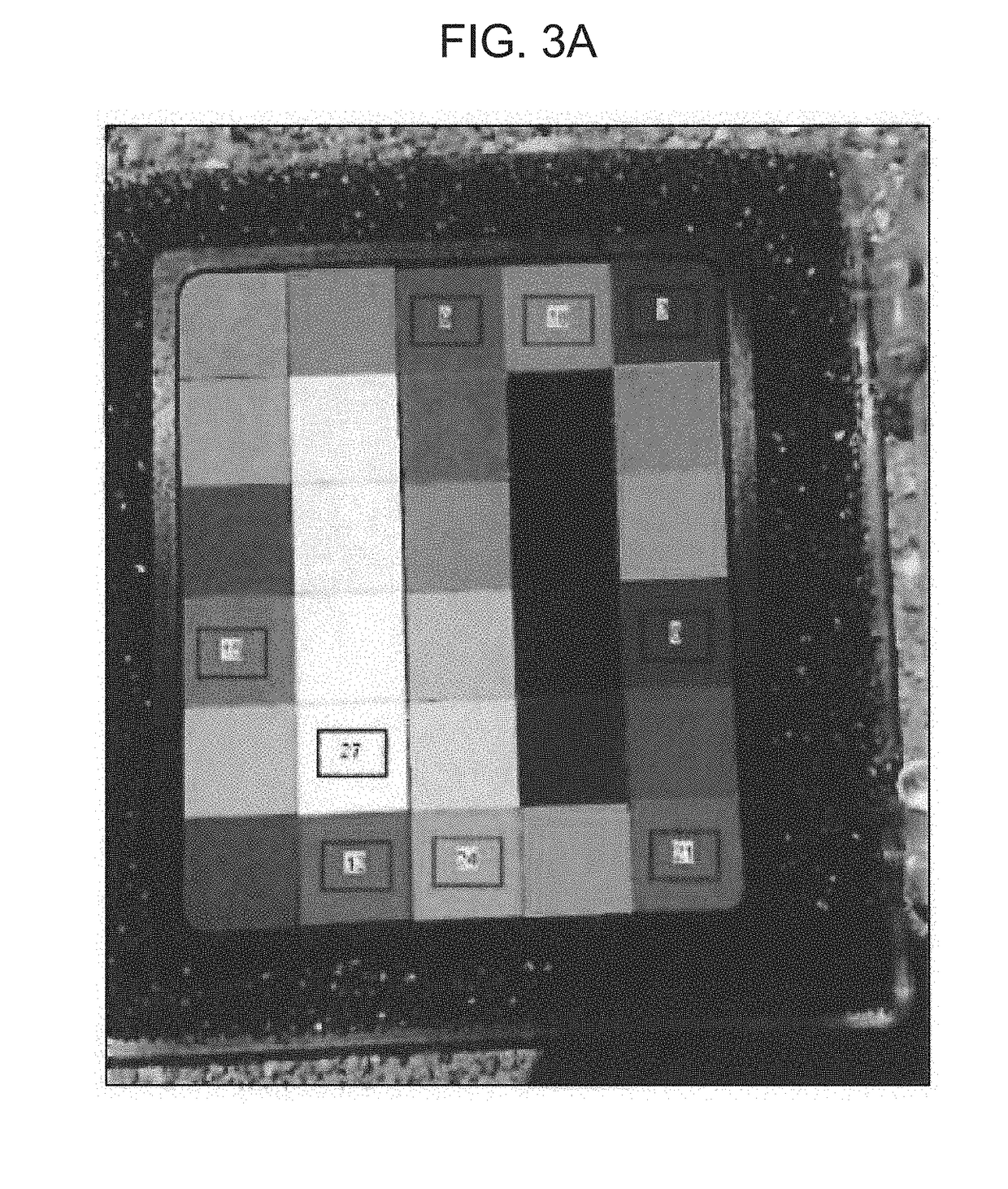Methods and Systems for Assessing Histological Stains
a method and system technology, applied in the field of histologically stained specimens, can solve the problems of specimen identification as inadequate quality, properties that are not useful in determining final quality and usability, and no way to re-calibrate the color pattern in images created
- Summary
- Abstract
- Description
- Claims
- Application Information
AI Technical Summary
Benefits of technology
Problems solved by technology
Method used
Image
Examples
example 1
Assessing Coloration Patterns in a Romanowsky Type Stained Specimen Using a Set of 6 Color Parameters (i.e., “Coloration Coefficients Method”)
[0198]The method used digital images from a Romanowsky-type stained hematological specimen smear, obtained from an optical microscope equipped with a color charge-coupled device (CCD) camera in Red, Green, and Blue (RGB) format. For each pixel, 3 color parameters (8 bit digitized values of cumulative absorbance in red, green and blue spectral channels) were measured and 3 color coefficients (a Red Coefficient, a Blue Coefficient and a Blue-Red Balance) were calculated to characterize hue and intensity of the color for any given pixel in the image. A Red Coefficient was calculated as a ratio of mean intensity value in the red channel versus the green channel, a Blue Coefficient was calculated as a ratio of mean intensity value in the blue channel versus the red channel, while a Blue-Red Balance was a ratio of the Blue Coefficient versus the Red...
example 2
f “Coloration Coefficients Method” Using a Color Calibration Target with a Well-Defined Color Mask
[0207]A concept of the present method was tested by using a color calibration target with a well-defined color mask (FIG. 3A). The data calculated for various hues of red, blue and purple colors on the mask (FIG. 3B) validate the concept of the method. For example, a Blue Coefficient obtained for blue colors was significantly higher compared to non-blue colors, while a darker versus lighter blue color is discriminated by a mean value of a blue signal. Similarly, reddish colors have a higher value of Red Coefficient, with a varying intensity of red signal depending on the lightness or darkness of the red color. Additional information on the ratio (balance) of red and blue hues in the specific color was given by the Blue-Red Balance, which respectively showed high values for blue colors, low values for red colors and around a unit value for hues of purple.
[0208]FIG. 3: A color target mask...
example 3
t of the Coloration of Eosinophils and Red Blood Cells Using “Coloration Coefficients Method”
[0209]This example demonstrates how the present method was applied to evaluate coloration of eosinophils and red blood cells in different smears stained with a Wright-Giemsa stain. As seen from the data provided, a pale eosinophil cell is clearly discriminated from a darker eosinophil cell by having higher values of R, G, B signals, while more reddish (for the granules) or more bluish (for the nuclei) hues for each main color can be distinguished by varying values of color coefficients (FIG. 4). Similarly, a normal erythrocyte can be discriminated from the erythrocyte with polychromasia by the value of the Blue-Red Balance, which indicates that a polychromatic cell has a higher degree of blue hue than the normal cell, with Blue-Red Balance values 1.03 (polychromatic) versus 0.85 (normal) (FIG. 5).
[0210]FIG. 4: Application of the present method to evaluate eosinophil coloration images of Wrig...
PUM
 Login to View More
Login to View More Abstract
Description
Claims
Application Information
 Login to View More
Login to View More - R&D
- Intellectual Property
- Life Sciences
- Materials
- Tech Scout
- Unparalleled Data Quality
- Higher Quality Content
- 60% Fewer Hallucinations
Browse by: Latest US Patents, China's latest patents, Technical Efficacy Thesaurus, Application Domain, Technology Topic, Popular Technical Reports.
© 2025 PatSnap. All rights reserved.Legal|Privacy policy|Modern Slavery Act Transparency Statement|Sitemap|About US| Contact US: help@patsnap.com



